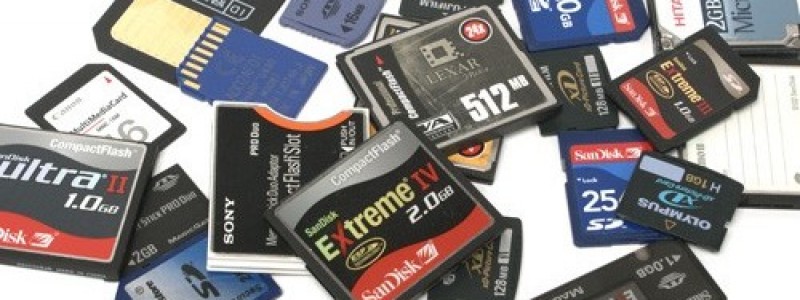Memory Card Recovery

A memory card or flash card is an electronic flash memory data storage device used for storing digital information. They are commonly used in many electronic devices, including digital cameras, mobile phones, laptop computers, MP3 players and video game consoles. Most of these can be diminutive, re-recordable, and can retain data without power.
Overview of all memory card types
- PCMCIA ATA Type I Flash Memory Card (PC Card ATA Type I)
- PCMCIA Type II, Type III cards
- CompactFlash Card (Type I), CompactFlash High-Speed
- CompactFlash Type II, CF+(CF2.0), CF3.0
- Microdrive
- MiniCard (Miniature Card) (max 64 MB (64 MiB))
- SmartMedia Card (SSFDC) (max 128 MB) (3.3 V,5 V)
- xD-Picture Card, xD-Picture Card Type M
- Memory Stick, MagicGate Memory Stick (max 128 MB); Memory Stick Select, MagicGate Memory Stick Select (“Select” means: 2×128 MB with A/B switch)
- SecureMMC
- Secure Digital (SD Card), Secure Digital High-Speed, Secure Digital Plus/Xtra/etc (SD with USB connector)
- miniSD card
- microSD card (aka Transflash, T-Flash)
- SDHC
- WiFi SD Cards (SD Card With WiFi Card Built in) Powered by Device. (Eye-Fi, WiFi SD, Flash Air)
- MU-Flash (Mu-Card) (Mu-Card Alliance of OMIA)
- C-Flash
- SIM card (Subscriber Identity Module)
- Smart card (ISO/IEC 7810, ISO/IEC 7816 card standards, etc.)
- UFC (USB FlashCard) (uses USB)
- FISH Universal Transportable Memory Card Standard (uses USB)
- Intelligent Stick (iStick, a USB-based flash memory card with MMS)
- SxS (S-by-S) memory card, a new memory card specification developed by Sandisk and Sony. SxS complies to the ExpressCard industry standard.
- Nexflash Winbond Serial Flash Module (SFM) cards, size range 1 mb, 2 mb and 4 mb.
Sherlock Data Recovery Services Data Recovery facilities technicians are intimately familiar with this and can help you recover your Memory Card.
















